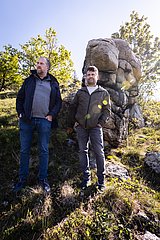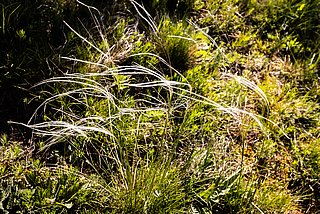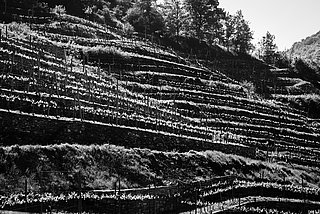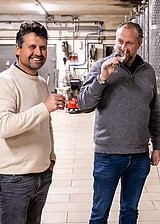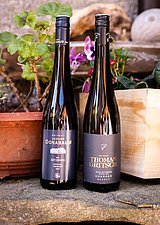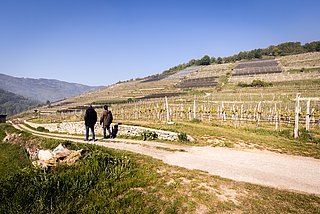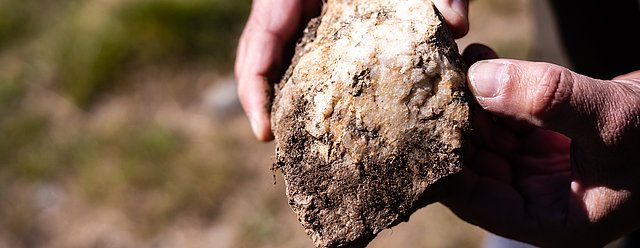
One hill – two sides.
West and east. Donabaum and Gritsch. We follow the two winegrowers to the foot of the Ried Setzberg site, to the Spitzer Graben ravine.
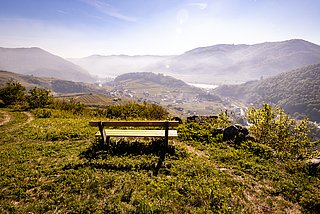
But to the west or east side? With Ried Setzberg, a major distinction. The 41-hectare site marks the climate boundary that separates Spitz from Spitzer Graben. And the more temperate Danube valley from the stiff, cold winds of the Waldviertel plateau. Johann Donabaum is convinced that “Setzberg is one of the Wachau’s biggest sites – which also includes yield.” Together with Thomas Gritsch we look into what’s at the ‘base’ of Setzberg. The site is unique also for its soil, after all. It’s not uncommon to see white quartz crystals shining among the vineyards. “That’s something you only see here,” Thomas Gritsch tells us.
The quartz veins in the paragneiss lend to tense wines with a clear, sleek mineral tone. No, the Setzberg Rieslings are not the ‘loudest’. But their firm acidity promises exceptional ageing potential. “The 2012 is now fantastically drinkable. But the 2017 vintage is also highly appealing.”
In step with the climate, the varieties grown on Setzberg have similarly changed. 1980s favourites such as Neuburger, Müller Thurgauer, Chardonnay and Weißburgunder/Pinot blanc have since given place to Riesling and Grüner Veltliner. The latter is at home in the deeper soils at the foot of the hill, while Riesling abounds in vineyards higher up. That thanks to an irrigation system installed back in 2000. “That put us into the race. Since then we have been seeing great wines from Setzberg.”
The eastern and western sections are separated by a large patch of dry grassland. The Wachau is known for its acidic fens, a habitat for rare plants and animals. The Steinfeder feather grass also thrives up here. To the valley below, the grasslands appear covered with a silver-grey blanket in the spring. “When we were kids, we would gather the feather grass and sell it to tourists. Before you knew it, you had 50 shillings,” Thomas Gritsch recalls.
Today, the grass is protected under conservation laws. Plucking is allowed only for very small quantities, used to decorate tasting rooms, or the hats worn with traditional peasant costumes. A herd of sheep are allowed to graze on the dry grasslands in the summer to keep them trimmed and prevent bushes from growing.
But, for all of its uniqueness, how do the wines hailing from this site taste? “We grow grapes on both the eastern and western sides of Setzberg – the resulting wines complement each other very well,” Johann Donabaum reports. He has been working the site since 1999. Thomas Gritsch, meanwhile, has a family history tied to Setzberg even longer: “We are now the fifth generation to grow grapes and make wine here.” Which says something about the age of many of the vines planted here. “Most are 35 to 40 years old in the western section, where our estate is located.” Apricot and peach: both agree that classic stone fruit varieties best describe the delicate aromas characterising the Rieslings from Setzberg. “When I want to explain to someone how Wachau Riesling tastes, I let them taste a Setzberg,” Johann Donabaum sums it up.
Setzberg has two sub-sites, by the way: Landstallen and Vogelsang are both located in the eastern section. In total, 14 Vinea Wachau vintners work this site. Check our vineyard map for details.

